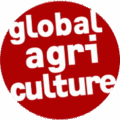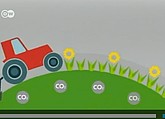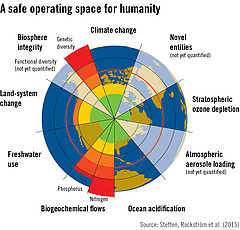
Agriculture produces more than just food and commodities. Since agriculture and forestry use more than 60% of the Earth’s land surface, these economic sectors are crucial to the functioning of our ecosystems. In 2009, a group of 29 scientists published a groundbreaking article in the journal Nature titled “A safe operating space for humanity” that was updated in 2015. The article tries to define the planetary boundaries for nine critical biophysical systems of the earth. According to the scientists, if humanity exceeds these safe thresholds, there will be a threat of abrupt or irreversible environmental changes. Just how much exactly the Earth system can endure before it collapses can be extensively discussed. However, the scientists argue that the safe operating space for four of the nine systems has already been clearly exceeded, namely in the area of climate change, land-system change, human interference with the biogeochemical cycles (phosphorus and nitrogen) and, in particular, the loss of biosphere integrity (biodiversity loss and species extinctions). The way we farm and produce our food is the decisive factor for these four boundaries as well as the rest of the nine crucial systems.
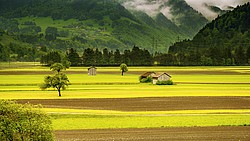
The IAASTD underlines the enormous environmental responsibility of agriculture reflecting the fact that over the past 50 years, we have been one-sidedly fixated with the aim of increasing efficiency and productivity. By doing so, we have lost sight of the fact that agricultural overproduction is seriously threatening the basis of our food supplies. Agriculture is the source of livelihoods for one third of the world’s population and creates the social structure of rural areas. Not only are jobs closely linked to agriculture; the social cohesion of communities, their level of self-sufficiency and their resilience in times of crisis and disaster also depend largely on agriculture. After all, agriculture often produces a feeling of belonging and being at home. The beauty, peculiarity, flavor, history and tradition of regions and cultural landscapes form our identity and even our spiritual values. Hardly any civilization is conceivable without its particular farming and food culture. This enormous wealth of natural diversity, as well as land use and agriculture, contribute more than just food and agricultural products to the prosperity of society – or, in the case of negative changes, its impoverishment.
Agriculture: vital but “valueless”
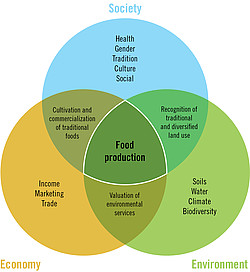
According to the authors of the IAASTD, over the past decades, the multifunctionality of agriculture has frequently been ignored and neglected by politics, economics and science, but also by agricultural companies and farmers themselves. The only factors that seemed to count in agriculture were yield, price and economic efficiency of products. Development and agricultural policies, as well as research and technology, were exclusively determined by these criteria. Beyond agricultural production, there are many vital services and goods that agriculture provides and maintains – or which agriculture neglects and destroys. These goods and services are of high value to communities, from the local level to the global community. Since they are not traded as a product, or at least only indirectly (e.g. tourism and health), the market does not determine a price defining their value.
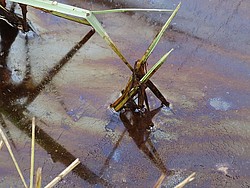
Something that does not fetch a price is seen as not worth being produced or preserved. Things that are considered free are often recklessly used, and have little value attached to them. As these services are apparently free of charge, some of the most valuable services of agriculture are threatened by purely market-based logic of cost considerations. If the destruction of the environment, as well as of landscapes and rural communities, is made more difficult, and thus becomes a cost factor, companies often relocate production and jobs. Environmental and social dumping can therefore become a competitive advantage on the world market.
Public money for public goods
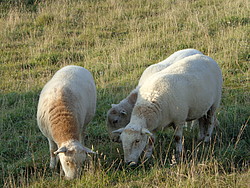
In recent times, however, science and politics have begun to recognize the multifunctionality of agriculture, especially from an ecological point of view. The EU Member States and other industrialized countries are starting to take the diverse role of agriculture more into account, particularly in areas such as law, the granting of subsidies and research. During the last EU agricultural reform, civil society organizations campaigned for a greener and fairer agricultural policy under the slogan “Public money for public goods”. The use of the term multifunctionality has however been controversial and contested within the World Trade Organization (WTO). Governments of the export-oriented countries in North and South America suspect it could lead to “market-distortion”. Companies and proponents of free-market theories largely oppose interventions on behalf of the protection of public goods and interests.
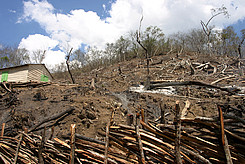
In many developing countries, as well as in industrial countries, short-term economic constraints and long-term sustainability goals seem often incompatible with one another. This applies to particular businesses, individual households and communities, as well as to macroeconomic decisions. Hardship, the fear of losing one’s livelihood or pressure of competition frequently lead to ecologically and socially destructive decisions and behaviour. The environmental and social services of agriculture could be promoted by giving them a market price and by paying for them. In addition, legal provisions and prohibitions at state and municipal level could help. The IAASTD gives examples for both options. They can perfectly complement each other but have to be assessed with regard to their effectiveness.
Multifunctionality as an opportunity
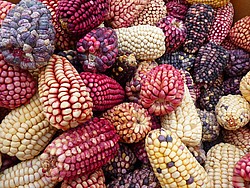
For highly specialized scientists, the concept of economic, ecological, social and cultural multifunctionality is an unusual challenge. Farmers and their communities could offer them guidance making use of their local and traditional knowledge, and their wealth of experience. For generations, it has been farmers’ core business to think and decide in a multifunctional way and to compare, in a pinch, also apples and oranges.
Human history contains many successful examples of how civilizations have sustainably shaped multifunctionality in exchange with nature – as well as examples of how they collapsed through failure to do so. Today, our globally interconnected society possesses a larger wealth of experience and knowledge than any other civilization before in order to meet the challenges ahead. However, it is also the first time that a real risk of global failure exists. To effectively face this risk, we must adapt our modes of behavior timely, diversely and simultaneously in as many places as possible. The multifunctionality of agriculture and food cannot be reduced to single aspects such as justice, hunger, health, resource conservation, or the protection of climate and species. Multifunctionality requires the high art of balancing all of these aspects in a constant exchange with all stakeholders.
Facts & Figures
Six of the nine planetary boundaries, critical Earth system processes that regulate life support systems on Earth, have been transgressed: Climate Change, Biosphere Integrity, Land System Change, Freshwater Change, Biogeochemical Flows (phosphorus and nitrogen), and the Introduction of Novel Entities. And the situation is deteriorating. Typically, environmental challenges such as climate change and biodiversity loss, have been addressed separately but they are interconnected and collectively impact our planet’s health, as well as human health, warns the Planetary Health Check 2024.
More than 3 billion people – almost half of the world’s population – live in rural areas. Roughly 2.5 billion of these rural people derive their livelihoods from agriculture. For many economies, especially those of developing countries, agriculture can be an important engine of economic growth.
By definition, the principle of multifunctionality in agriculture refers to agriculture that provides food products for consumers, livelihoods and incomes for producers, and a range of public and private goods and services for citizens and the environment, including ecosystem functions.
The EU failed to make the Common Agricultural Policy (CAP) greener and the environmental reforms are so diluted they will not benefit biodiversity, a study published in the journal Science found. The authors recommend maximising the budget for agri-environment schemes: “The CAP should pay for ‘public goods’ associated with sustainable farming: thriving wildlife, beautiful landscapes, clean water, fertile soils, land that contributes to a stable climate, and diverse communities of wild insects to pollinate crops or regulate pest outbreaks”, according to lead author Lynn Dicks.
“We need to see a move from a linear to a holistic approach in agricultural management, which recognises that a farmer is not only a producer of agricultural goods, but also a manager of an agro-ecological system that provides quite a number of public goods and services (e.g. water, soil, landscape, energy, biodiversity and recreation).”
Mechanisms to increase the accountability of powerful commercial actors in terms of development and sustainability goals have been weak. However in recent decades, public information campaigns, shareholder activism and more effective documentation and communication of bad practice have begun to exert some pressure for change.
The OECD (Organisation for Economic Co-operation and Development) Declaration of the Agricultural Ministers Committee defines multifunctionality of agriculture as follows:
“Beyond its primary function of producing food and fibre, agricultural activity can also shape the landscape, provide environmental benefits such as land conservation, the sustainable management of renewable natural resources and the preservation of biodiversity, and contribute to the socio-economic viability of many rural areas. Agriculture is multifunctional when it has one or several functions in addition to its primary role of producing food and fibre.”
Multifunctionality of Agriculture: A Review of Definitions, Evidence and Instruments, p. 6
